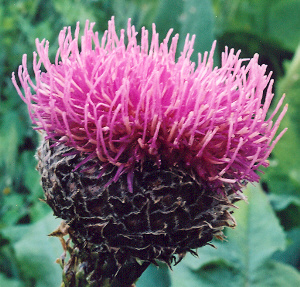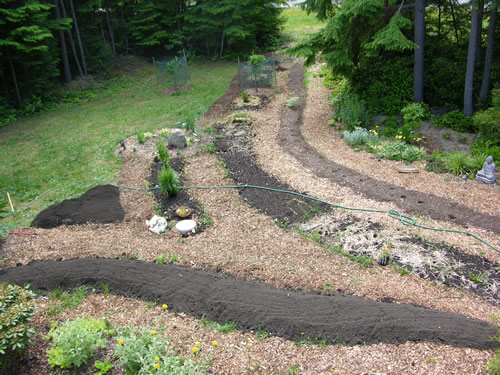Exotic Plants |
m | ||||||||
Posted to Subscribers on 9 August 2014 |
|||||||||
|
|
This post will hopefully be short and a bit fun. Sometimes, I make changes on sites without telling you. This was the case with seedseva.com. Over the last year or so, I have added a lot of videos, not just the ones on desertification and permaculture but also several videos on growing your own food as well as beekeeping. Take a look: http://www.seedseva.com/videos/bee_videos.php There are also quite a lot of new books and I just finished adding some seeds that have not been carried before. As you may recall, this year is to be my adaptogenic year in garden. Unlike many others, there have been some plants I have been unable to start from seeds. I actually begged a few people to send me seedlings but they wrote instructions for growing from seeds . . . that, alas, have not worked for me. Luckily, I eventually found a nursery that sells the plants. That was inspiring but the seeds I ordered are not ones I had before so hopefully germination will not be a problem. There are two new pages on seedseva.com. One has herbs that are adaptogenic, meaning herbs that help to extend our coping margins. Adaptogenic herbs allow people to exert themselves without becoming exhausted and without flooding the body with hormones. Many adaptogens are used in sports to give athletes a competitive edge. Others are provided to people in high stress jobs, such as people who operate dangerous machinery or combat soldiers. Besides trying to win Olympic gold, there are countless other situations that test our ability to cope. These can include physical, emotional, and mental stress as well as financial, environmental, and political stress. In today's world when we cannot trust our bankers or politicians, when we are not sure our doctors have the training or compassion we need, when we are struggling with our own dysfunction as well as the rest of the world's madness, we easily hit overload. If we want, we can add the frustration of knowing we are souls but not being able to live that reality to the fullest, we really do have critical mass. I became a vegetarian countless years ago after reading that volunteers were needed to attune to the plant kingdom. At the time, it was said that the rewards would begin 25 years after committing to a vegetarian diet. I thought "they" must be desperate if they had to ask for volunteers. Now, I am convinced that the plants are far more advanced in certain areas than we are. Only a few days ago, someone sent me an article about plant communication, including their ability to produce sound. We all live in a matrix of sound, but humans produce a lot of dissonance compared to waterfalls and leaves. Anyway, I want to study these adaptogens. Obviously, most of the plants will not be big enough to harvest for some years, but I want to grow them. I also want to find out who likes whom in the garden. Note that the Ayurvedic herbs can produce antioxidants and adaptogens in a matter of weeks or months as compared to the Siberian plants. http://seedseva.com/seed_shop/adaptogenic_plants.php The second new page has the title of "Exotic Plants" but how exotic depends on what you know and where you are. If you think of a normal American garden, there might be pansies and roses and perhaps some lettuce and tomatoes. So, I tried to think of what one could plant that is practical but different. Among the vegetables, I included zaatar and sea kale. Zaatar is interesting and sea kale is dramatic, especially if you have a hillside or rocks. . . which happens not to be the case with me. Two other edible plants are carob and blue camas. Carob is a scraggly tree and blue camas grows sort of like an onion and tastes a bit like sweet potatoes when baked.
There are a few more plants on that page: http://seedseva.com/seed_shop/exotic_plants.php Gardening can be a lot of work or a lot of fun. It can be rewarding or frustrating. I am happy to report that my entire front yard is now converted to conscious growing. What can I say? Others could have accomplished in a weekend what has taken me several years, five years more or less. If the purpose is to grow one's own food, then I think it would be fun to work in teams, maybe 4-10 people who spend a weekend covering the lawns with whatever they want to plant. It would have a jump start effect but the learning curve might be more or less the same because regardless of what you think you know, Nature is going to teach you what She decides to teach you. For instance, nearly everyone in my little town lost all their lavender and rosemary one year. Normally, these plants do well here, but not lately. Additionally, as one gets deeper and deeper into permaculture, one realizes that one does not want to pull up everything in fall and leave exposed soil. Plants need to protect the soil from drying out or losing nutrients due to rain and snow. So, one needs to think through all these matters. I seriously doubt one will master all the lessons in one season or a year so it doesn't really matter whether you make the conversion in one weekend or five years. It's also pretty hard to get the compost going. I had truckloads of soil delivered, supposedly organic, but all it means is that the company did not add any chemicals to yard waste they composted. Who knows what is actually in the soil. Of one thing I am certain: the quality of the soil keeps improving and improving so this tells me a lot. For those who did not follow this saga from the beginning, let me go over a couple of basic ideas. I will repeat some details from my process because I watched some videos last night about how others began producing their own food. Unlike many others, my main yard conversion was in the front of the house. There was a very conventional lawn. I did not dig it up or turn it over or do anything complicated or backbreaking. Everything was simply put on top of what was already there. This is consistent with the principles of permaculture as promulgated by Fukuoka-sensei. I see many others building raised bed gardens. I have a few of these in the backyard, but the front is basically "natural" except that I planted quite a lot that is not native to this part of the world. This was important to me because I believe in biodiversity and providing alternative habitats for precious species. There are various ways to start the conversion. One is called lasagna gardening. It involves putting down cardboard and putting soil on top of the cardboard. This is very easy to do, quite fast, and it works. The grass is choked out long enough to give the new plants a chance to establish themselves. I have not had to pull up grass, but I did not use this method everywhere. If you do use cardboard, remove the tape before putting down the cardboard. As you can imagine, I receive deliveries practically every day so there is a lot of cardboard here. I am basically using almost all of it to build soil.
In the beginning, I did have a couple of truckloads of soil and compost delivered, but that is the jump start method. It would be very hard to get going without some dirt. Most of what was delivered had seeds that germinated. That was a bit of a hassle. Some soil smelled pretty bad. I'm in the Pacific Northwest where there are lots of evergreens. After a storm, some trees fall down. Neighbors often had arborists cut the trees and chip them. I asked the crews to dump the chips on my driveway and this was used to make pathways. It held down the grass and weeds and was basically free except for a tip to the chaps who delivered the mulch. After the last load, I had enough chips to finish the entire conversion. In the meantime, all the branches from pruning and leaves from raking and kitchen scraps have been composted. At this juncture, I produce more than I need for myself, but in the beginning I did buy a few bags of mulch and potting soil. What I am producing myself is however much higher quality. It took many years before I began to find worms in the soil. Of course, as soon as there were worms, there were birds. With the birds came chirping and sounds of Nature. My neighbors sometimes stop to gawk or ask questions, but so far as I know, no one is imitating me. I feel my place is more peaceful. Like many suburban homes, the majority of the land was bulldozed before the foundation for the house and septic system was installed. The soil was terrible, just dead sand, light brown in color, no organic material. Nothing I planted thrived. It has taken a long time to restore the life to soil but I think that when more people understand what I have been learning, we will all take responsibility for trusteeship of our little spaces on Earth. Many blessings, Ingrid Copyright by Ingrid Naiman 2014
|
||||||||
Home || Contact Us |
|||||||||
No content on any of the pages of this web site may be reproduced without written permission of Ingrid Naiman and Seventh Ray Press, publisher of this site. |
|||||||||
|
|||||||||



